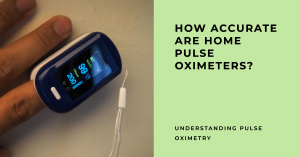
In today’s fast-paced world, where individuals are increasingly taking charge of their health, home pulse oximeters have gained immense popularity. These compact devices provide a convenient and non-invasive way to measure oxygen saturation levels in the blood. However, concerns have been raised about the accuracy of these devices, prompting the need for a comprehensive examination of their reliability.
At HealthisSanity, we understand the importance of accurate health monitoring. In this article, we aim to delve into the accuracy of home pulse oximeters, addressing common misconceptions, discussing factors that may affect their readings, and providing valuable insights to help you make informed decisions about your health.
How Accurate Are Home Pulse Oximeters: Understanding Pulse Oximetry

Before diving into the accuracy of home pulse oximeters, it is crucial to understand the underlying principle of pulse oximetry. This technology measures the oxygen saturation levels in your blood, commonly referred to as SpO2, by shining light through your skin and analyzing the absorption patterns of oxygenated and deoxygenated hemoglobin. This allows for non-invasive estimation of your blood oxygen levels.
The Varied Accuracy of Home Pulse Oximeters
Home pulse oximeters, like any medical device, exhibit varying levels of accuracy. It is essential to consider certain factors that can impact the reliability of these readings. While we cannot provide specific accuracy percentages for every model on the market, we can shed light on the potential sources of variation in readings:
1. Device Quality and Calibration
The accuracy of a home pulse oximeter heavily relies on the quality of its design, components, and calibration. Higher-quality devices often undergo rigorous testing and calibration processes, ensuring more precise and consistent results. When selecting a home pulse oximeter, it is advisable to choose a reputable brand known for its commitment to quality.
2. Finger Placement and Movement
Proper finger placement is crucial to obtaining accurate readings. Placing your finger too loosely or allowing excessive movement during the measurement can introduce errors. Ensure that your finger covers the sensor completely and remains still throughout the reading for optimal accuracy.
3. Nail Polish and Artificial Nails
Nail polish and artificial nails can interfere with light transmission and absorption, potentially leading to inaccurate readings. It is advisable to remove nail polish or artificial nails before using a home pulse oximeter to ensure reliable results.
4. Skin Pigmentation and Thickness
Individuals with darker skin pigmentation may experience slightly lower accuracy rates due to the way light is absorbed and transmitted through the skin. Similarly, individuals with thicker skin may encounter challenges in obtaining accurate readings. While technological advancements have improved accuracy across different skin types, it is essential to consider potential variations.
5. Motion and Environmental Interference
Excessive movement, poor circulation, cold temperatures, or low perfusion can all affect the accuracy of pulse oximeters. Ensure that you are in a stable position, allowing the device to capture reliable readings unaffected by external factors.
Ensuring Reliable Readings with Home Pulse Oximeters
While various factors can influence the accuracy of home pulse oximeters, there are steps you can take to enhance the reliability of your measurements:
1. Research and Choose Reputable Brands
To maximize the accuracy of your home pulse oximeter, opt for brands that have a proven track record of producing high-quality devices. Read customer reviews, consult healthcare professionals, and consider brands that adhere to stringent manufacturing standards.
2. Follow Proper Usage Guidelines
Carefully read and follow the instructions provided with your home pulse oximeter. Each device may have specific recommendations for finger placement, duration of measurement, and usage conditions. Adhering to these guidelines will help you obtain more accurate results.
3. Regularly Calibrate and Maintain Your Device
Some home pulse oximeters require periodic calibration or maintenance to ensure consistent accuracy. Follow the manufacturer’s instructions regarding calibration and device upkeep to keep your measurements as reliable as possible.
4. Consult with Healthcare Professionals
While home pulse oximeters can provide valuable insights into your health, they should not replace professional medical advice. If you have concerns about your oxygen saturation levels or the accuracy of your readings, consult with a qualified healthcare professional who can provide expert guidance and help interpret the data accurately.
Conclusion
Home pulse oximeters offer a convenient way to monitor your blood oxygen levels, but understanding their accuracy is vital for informed health decisions. While there may be variations in accuracy among different models and factors that can influence readings, following proper usage guidelines and choosing reputable brands can enhance the reliability of your measurements.
At HealthisSanity, we value your health and well-being. Our commitment to delivering accurate information and providing reliable products empowers you to make confident decisions about your health. Remember, precise health monitoring begins with informed choices and a holistic approach to your well-being.





